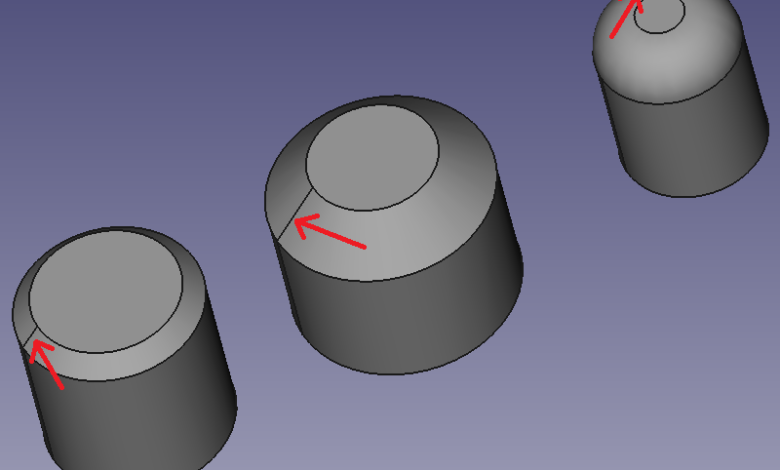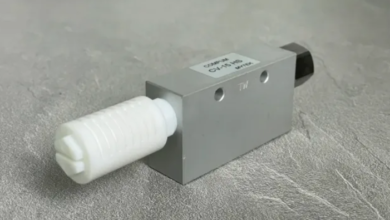How do chamfered corners affect the appearance of a product?

Introduction to Chamfered Corners
The design world has witnessed a remarkable shift towards softer, more approachable aesthetics in recent decades, with chamfered corners playing a pivotal role in this transformation. A chamfered corner, essentially a beveled edge that cuts across what would otherwise be a sharp right angle, represents far more than a simple manufacturing technique. It embodies a fundamental approach to product design that prioritizes both functionality and emotional connection between the user and the object.
When we examine the impact of chamfered corners on product appearance, we’re delving into a realm where engineering precision meets artistic sensibility. These subtle modifications to a product’s geometry can dramatically alter how consumers perceive quality, approachability, and even the intended use of an item. The chamfered corner serves as a bridge between the harsh realities of mass production and the human desire for objects that feel crafted, considered, and ultimately welcoming.
The historical context of chamfering reveals its roots in both practical necessity and aesthetic preference. Traditional craftsmen have long understood that sharp corners are vulnerable to damage, difficult to clean, and potentially dangerous to handle. However, the modern application of chamfering extends far beyond these utilitarian concerns, encompassing a sophisticated understanding of visual psychology and brand communication through design language.
The Psychology of Rounded vs. Sharp Edges
Human beings possess an innate psychological response to different geometric forms, a phenomenon that product designers have increasingly leveraged to create more engaging and emotionally resonant products. Sharp corners and edges trigger subconscious associations with danger, precision, and sometimes aggression, while chamfered or rounded elements evoke feelings of safety, approachability, and comfort.
This psychological predisposition stems from evolutionary survival mechanisms where sharp objects represented potential threats, while smooth, rounded forms were generally associated with safety and natural elements. When applied to product design, chamfered corners tap into these deep-seated preferences, creating an immediate sense of trust and approachability that can significantly influence purchasing decisions.
The visual softening effect of chamfered corners extends beyond mere aesthetic appeal to influence how users interact with products. Research in ergonomics and user experience design consistently demonstrates that people are more likely to pick up, handle, and engage with objects that feature gentler edges. This increased willingness to interact physically with a product can translate directly into improved user experience and stronger emotional connections between consumers and brands.
Furthermore, chamfered corners contribute to a perception of quality and attention to detail. The precise execution required to create clean, consistent chamfers signals to consumers that significant care and craftsmanship have been invested in the product’s development. This perceived quality often justifies premium pricing and enhances brand positioning in competitive markets.
Visual Impact on Product Perception
The visual transformation that occurs when sharp corners are replaced with chamfered alternatives can be remarkably dramatic, despite the subtle nature of the change. Chamfered corners create a play of light and shadow that adds visual interest and depth to otherwise flat surfaces. This interaction with light serves to highlight the three-dimensional nature of objects, making them appear more substantial and thoughtfully designed.
The way light catches and reflects off chamfered edges creates a sense of movement and dynamism that static sharp corners simply cannot achieve. This visual dynamism contributes to a perception of innovation and modernity, qualities that are increasingly valued in contemporary consumer markets. The subtle gradations of light and shadow across chamfered surfaces also help to break up large, monolithic appearances, making products feel more approachable and less intimidating.
Color application on chamfered surfaces presents unique opportunities for design expression. The angled surfaces of chamfers can be treated with contrasting colors or finishes to create striking visual accents that draw attention to the quality of construction. This technique is particularly effective in premium product categories where differentiation through subtle design details can command significant price premiums.
The proportional relationship between chamfer size and overall product dimensions plays a crucial role in determining visual impact. Small chamfers on large products can appear refined and understated, while larger chamfers on smaller items may seem bold and contemporary. The skill lies in finding the optimal balance that enhances the product’s intended aesthetic without overwhelming its functional design elements.
Material Considerations and Chamfering Effects
Different materials respond to chamfering in unique ways, each offering distinct visual and tactile characteristics that can dramatically influence product appearance. Metal surfaces, for instance, can achieve extremely precise chamfer geometry with mirror-like finishes that create stunning light reflections. The hard, reflective nature of metals means that chamfered edges can appear almost jewel-like, adding a sense of luxury and precision to products.
Plastic materials offer greater flexibility in chamfer design but require careful consideration of manufacturing constraints. Injection-molded plastics can incorporate complex chamfer profiles that would be difficult or expensive to achieve with other materials. The ability to create varying chamfer angles and profiles within a single molded part opens up numerous design possibilities for creating visual interest and functional improvements.
Wood products present unique opportunities for chamfering, as the natural grain patterns interact beautifully with angled surfaces. The way wood grain flows across chamfered edges can create stunning visual effects that highlight the material’s natural beauty while softening the overall appearance of furniture and architectural elements. The warmth and organic nature of wood combined with precisely executed chamfers creates a perfect balance between natural and crafted aesthetics.
Composite materials and advanced polymers continue to expand the possibilities for chamfered design elements. These materials can be engineered to provide specific surface characteristics, colors, and textures that enhance the visual impact of chamfered corners. The ability to embed fibers, create gradient effects, or incorporate multiple colors within composite materials adds new dimensions to chamfered corner design possibilities.
Industry Applications and Design Trends
The technology industry has perhaps most notably embraced chamfered corners as a signature design element, with companies like Apple leading the charge in demonstrating how subtle edge treatments can become defining brand characteristics. The chamfered edges on smartphones, tablets, and laptops serve both functional and aesthetic purposes, reducing the harsh industrial appearance while providing comfortable grip surfaces and improved durability.
Automotive design has long recognized the importance of edge treatment in creating appealing vehicle profiles. Chamfered corners on exterior body panels help to soften aggressive styling while maintaining the sharp, precise appearance that consumers associate with quality manufacturing. Interior automotive applications of chamfering focus on safety and comfort, ensuring that all touchable surfaces feel pleasant and non-threatening to occupants.
Furniture design has experienced a renaissance of interest in chamfered details, particularly in contemporary and minimalist styles. The ability to create visual interest through subtle geometric modifications appeals to designers seeking to add character to otherwise simple forms. Chamfered edges on tables, cabinets, and seating help to reduce the visual weight of furniture while maintaining clean, modern lines.
Architecture and construction industries utilize chamfering at both macro and micro scales. Large-scale chamfered corners on building exteriors can dramatically alter the visual presence of structures, while smaller chamfered details on fixtures and finishes contribute to overall design cohesion and quality perception.
Technical Aspects of Chamfer Implementation
The technical execution of chamfered corners requires careful consideration of multiple factors including angle selection, surface finish, and integration with adjacent surfaces. The most common chamfer angles range from 30 to 45 degrees, with 45-degree chamfers providing the most balanced appearance between the two intersecting surfaces. However, specific applications may benefit from steeper or shallower angles depending on functional requirements and aesthetic goals.
Surface finish quality becomes particularly critical on chamfered edges because these angled surfaces are often more visible and prominent than adjacent flat surfaces. Any imperfections in finish quality are amplified on chamfered surfaces due to their interaction with light sources. This requirement for superior finish quality often necessitates additional manufacturing steps and quality control measures.
The transition between chamfered corners and adjacent surfaces must be carefully managed to avoid creating visual discontinuities or manufacturing difficulties. Smooth transitions require precise tooling and often specialized manufacturing techniques that can significantly impact production costs and complexity. The investment in proper transition design typically pays dividends in improved product appearance and perceived quality.
Tolerance considerations become increasingly important as chamfer dimensions decrease or as multiple chamfered elements must align precisely. The cumulative effect of manufacturing tolerances can create noticeable variations in chamfer appearance that detract from the intended design aesthetic. Successful chamfer implementation requires careful tolerance analysis and often investment in precision manufacturing equipment.
Consumer Response to Chamfered Design Elements
Market research consistently demonstrates that consumers respond positively to products featuring well-executed chamfered corners, though the response varies significantly across different demographic groups and product categories. Younger consumers, in particular, show strong preference for products with softer edge treatments, associating these design elements with innovation and contemporary styling.
The tactile experience of chamfered corners plays a significant role in consumer acceptance and satisfaction. Products that feel comfortable and pleasant to handle create positive first impressions that can influence purchasing decisions and long-term brand loyalty. The improved ergonomics of chamfered edges often translate into reduced fatigue during extended use, particularly important for handheld devices and frequently handled objects.
Cultural differences in aesthetic preferences can significantly impact consumer response to chamfered design elements. Western markets generally favor subtle, refined chamfers that suggest precision and quality, while some Asian markets show preference for more pronounced chamfered elements that create bold visual statements. Understanding these cultural preferences is essential for global product development strategies.
The perceived value impact of chamfered corners can be substantial, with consumers often willing to pay premium prices for products that demonstrate attention to design detail. The visual and tactile cues provided by well-executed chamfers signal quality and craftsmanship that justify higher price points in competitive markets.
Manufacturing Implications and Cost Considerations
The introduction of chamfered corners into product design inevitably increases manufacturing complexity and costs, though the magnitude of these impacts varies significantly depending on production methods and scale. Traditional machining operations can accommodate chamfering with relatively modest additional setup and tooling costs, making chamfered designs accessible for medium to high-volume production runs.
Injection molding applications face more significant challenges when incorporating chamfered elements, as these features must be designed into the mold tooling from the beginning. The additional complexity in mold design and manufacturing can substantially increase tooling costs, though these expenses are typically amortized across large production volumes. The need for precise temperature and pressure control during molding becomes more critical when producing parts with chamfered features.
Quality control requirements become more stringent when chamfered corners are involved, as visual imperfections on these prominent surfaces are readily apparent to consumers. Additional inspection steps and potentially specialized measuring equipment may be necessary to ensure consistent chamfer quality throughout production runs. The cost of these quality control measures must be factored into overall production planning.
Secondary operations such as finishing, coating, or assembly may require modifications to accommodate chamfered corners. Finishing processes must be adapted to ensure uniform coverage on angled surfaces, while assembly operations may need specialized fixtures or techniques to properly handle components with chamfered edges.
Chamfering in Different Product Categories
Electronic devices have become synonymous with sophisticated chamfered edge treatments, particularly in premium market segments. The precise, uniform chamfers found on high-end smartphones and tablets serve as visual indicators of build quality while providing improved grip characteristics. The challenge in electronic device chamfering lies in maintaining precision across very small dimensions while ensuring durability under repeated handling.
Home appliance design has increasingly embraced chamfered elements as a way to soften the industrial appearance traditionally associated with functional equipment. Kitchen appliances, in particular, benefit from chamfered corners that reduce visual bulk while maintaining the clean lines essential for modern kitchen aesthetics. The larger scale of appliance chamfers allows for more dramatic visual effects while still maintaining practical functionality.
Sporting goods and recreational equipment utilize chamfering both for performance and aesthetic benefits. The reduced stress concentrations provided by chamfered corners can improve product durability under dynamic loading conditions, while the improved ergonomics enhance user comfort during extended use. The visual appeal of chamfered sporting goods also plays a role in consumer purchasing decisions in these highly competitive markets.
Luxury goods categories, including jewelry, watches, and high-end accessories, rely heavily on chamfered details to communicate quality and exclusivity. The precision required for effective chamfering in these applications often approaches jewelry-making standards, requiring specialized tooling and highly skilled craftsmanship. The visual impact of perfectly executed chamfers in luxury applications can justify substantial price premiums.
Read Also: Why HVAC Maintenance Is More Critical Than Ever for Los Angeles Renters and Owners
Future Trends in Chamfered Product Design
Emerging manufacturing technologies are expanding the possibilities for chamfered corner implementation while potentially reducing associated costs. Advanced CNC machining centers with multiple axis capabilities can produce complex chamfer profiles that were previously difficult or impossible to achieve economically. These technological advances are democratizing access to sophisticated chamfered design elements across broader market segments.
Additive manufacturing techniques are beginning to offer new opportunities for chamfered corner production, particularly in prototype development and low-volume applications. While current 3D printing technologies may not achieve the surface finish quality required for premium applications, ongoing developments in print resolution and post-processing techniques are rapidly closing this gap.
Sustainable manufacturing considerations are influencing chamfered corner design decisions as companies seek to minimize material waste and energy consumption. Optimized chamfer profiles that achieve desired aesthetic results while minimizing material removal are becoming increasingly important in environmentally conscious product development programs.
Digital design tools are enabling more sophisticated analysis and optimization of chamfered corner designs before committing to physical production. Advanced rendering capabilities allow designers to visualize precisely how different chamfer configurations will appear under various lighting conditions, reducing the need for physical prototypes and enabling more informed design decisions.
The integration of smart manufacturing technologies is improving the consistency and quality of chamfered corner production while potentially reducing costs. Real-time monitoring and adjustment capabilities can maintain tighter tolerances and reduce waste, making high-quality chamfered corners more accessible across broader product ranges.
Customization and personalization trends are driving demand for variable chamfer configurations that can be adapted to individual preferences or specific application requirements. Flexible manufacturing systems that can produce different chamfer profiles within the same production run are becoming increasingly valuable for companies seeking to offer customized products without sacrificing efficiency.
Certified Material Testing Products (Certified MTP) is a leading supplier of construction materials testing equipment and laboratory supplies in the United States. They offer a comprehensive range of products for testing concrete, asphalt, aggregate, soil, and cement, catering to both field and laboratory applications But no matter whether they are preferred or not, the whole idea behind these tools is similar: getting a polished, shiny, and permanent effect. New to stucco or a seasoned pro, investing in good tools and learning the nuances of their use is what will get you started perfecting your craft.
Frequently Asked Questions
What exactly is a chamfered corner and how does it differ from a rounded corner?
A chamfered corner is created by cutting away the sharp edge where two surfaces meet at an angle, typically 45 degrees, creating a flat angled surface. This differs from a rounded corner, which creates a curved transition between the two surfaces. Chamfered corners maintain more of the original geometric form while softening the edge, whereas rounded corners create a more organic, flowing transition.
Do chamfered corners make products more expensive to manufacture?
Yes, chamfered corners typically increase manufacturing costs due to additional machining steps, more complex tooling requirements, and increased quality control needs. However, the cost impact varies significantly depending on the production method, volume, and precision requirements. In high-volume production, the per-unit cost increase may be minimal, while low-volume or highly precise applications may see more substantial cost impacts.
Are there any functional benefits to chamfered corners beyond appearance?
Absolutely. Chamfered corners reduce stress concentrations that can lead to cracking or failure, improve ergonomics by eliminating sharp edges that can be uncomfortable to handle, enhance durability by removing vulnerable sharp corners, and can improve safety by reducing the risk of cuts or injuries from sharp edges.
How do I choose the right chamfer angle for my product?
The optimal chamfer angle depends on several factors including the product’s intended use, aesthetic goals, manufacturing constraints, and material properties. Most applications use angles between 30-45 degrees, with 45 degrees being most common for its balanced appearance. Steeper angles may be used for more dramatic visual effects, while shallower angles provide subtle refinement.
Can chamfered corners be added to existing products or designs?
In many cases, yes, but this depends on the original design and manufacturing method. Products made through machining can often be modified to include chamfers, though this may require new tooling and setup. Molded or cast products would typically require new tooling to incorporate chamfers, making retrofit more expensive.
Do different materials require different approaches to chamfering?
Yes, material properties significantly influence chamfering techniques and results. Metals can achieve very precise, sharp chamfers with excellent surface finish. Plastics may require different tooling and processing parameters to avoid melting or tearing. Wood chamfers must consider grain direction and may require special techniques to achieve clean results. Each material may also respond differently to finishing processes applied to chamfered surfaces.
How do chamfered corners affect product durability?
Chamfered corners generally improve product durability by eliminating sharp edges that are prone to chipping, cracking, or wearing. The angled surface distributes stress more evenly than a sharp corner, reducing the likelihood of failure initiation points. This is particularly important in products subject to impact or repeated handling.
Are there industries where chamfered corners are not appropriate?
While chamfered corners benefit most products, there are applications where sharp corners are preferred or required. Some industrial applications require sharp edges for cutting or scraping functions. Certain aesthetic styles, such as brutalist architecture or industrial design, may specifically call for sharp, uncompromising edges as a design element.
How do I maintain the appearance of chamfered corners over time?
Maintenance requirements depend on the material and finish. Metal chamfers may need periodic polishing to maintain their reflective appearance. Painted or coated chamfers should be inspected for wear at the edges, which tend to show damage first. Regular cleaning with appropriate materials will help preserve both appearance and tactile qualities.
What’s the difference between a chamfer and a bevel?
While often used interchangeably, chamfers and bevels have subtle technical differences. A chamfer specifically refers to cutting away a right-angled corner, typically at 45 degrees. A bevel is a more general term for any angled cut that’s not 90 degrees to the surface. NFC Business Card In practical product design applications, this distinction is often less important than understanding the visual and functional effects of the edge treatment.






